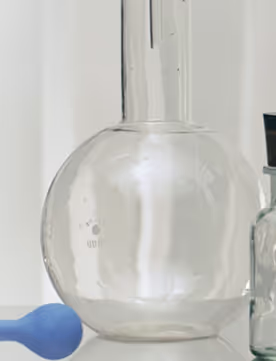Monk fruit and stevia are both non-nutritive sweeteners that are commonly used as substitutes for, or alternatives to, regular sugar. They have similar purported health benefits, such as anti-inflammatory and antioxidant properties, and are generally safe for those with diabetes. However, monk fruit and stevia sweeteners may have negative gastrointestinal side effects if you have IBS. In this article we’ll look at what monk fruit and stevia have in common, how they differ, and how to decide if either is right for you.
What Is Monk Fruit?
Monk fruit, also known as luo han guo, is the small, round fruit of Siraitia grosvenorii Swingle, a member of the gourd family native to China and Southeast Asia. It is believed to have been cultivated for over 200 years by monks in the Guangxi province of China, which is how it got its common name. Monk fruit has long been used in traditional Chinese medicine to relieve sore throats and coughs and to clear phlegm. (Source)
Monk fruit gets its sweetness from compounds called mogrosides. Mogrosides are up to 250 times sweeter than sucrose, which is found in sugar cane and many fruits and vegetables. It has been approved by the U.S. Food and Drug Administration (FDA) as a safe sugar substitute or sugar alternative for everyone, including children and pregnant women. Monk fruit appeals to those with diabetes because of its purported anti-diabetic properties. (Source, Source)
What Are the Benefits of Monk Fruit?
Monk Fruit’s Anti-Diabetic Properties
One of the most notable benefits of monk fruit is its purported anti-diabetic properties.
AMP-activated protein kinase (AMPK) is an enzyme that works to balance the energy we provide our bodies (in the form of food) with the energy we expend (in exercise and normal metabolic processes). One of AMPK’s jobs is to help regulate blood sugar, and oral diabetes medications have been developed that lower blood sugar indirectly by activating AMPK. (Source)
Animal studies suggest the mogrosides in stevia also activate AMPK and may be effective in treating diabetes. However, more studies are needed in order to fully understand the anti-diabetic properties of mogrosides. (Source, Source)
Monk Fruit’s Antioxidant Properties
The blood sugar-regulating hormone insulin is produced by the pancreas, a digestive and endocrine organ tucked up behind the stomach. Damage to cells in the pancreas by oxidative stress is implicated in development of type 2 diabetes. Because of their antioxidant properties, mogrosides in monk fruit may protect pancreatic cells from oxidative stress and help restore normal insulin secretion. (Source, Source)
Monk Fruit’s Anti-Inflammatory Properties
A study published in Pharmaceutical Biology found that mogrosides reduced inflammation in damaged lung tissue by inhibiting inflammatory mediators, which are messengers that act on cells to promote an inflammatory response. More work is needed, of course but this suggests monk fruit may have protective and preventive effects on inflammation in the body. (Source)
Monk Fruit’s Anti-Fatigue Properties
Monk fruit may help improve physical fatigue. During intense exercise, our body produces lactic acid that builds up in our muscles before entering our bloodstream. Studies in mice have found monk fruit extract decreased lactic acid levels and reduced fatigue. (Source, Source)
What Are the Disadvantages of Monk Fruit?
Table sugar is a bulk sweetener, which serves purposes in addition to sweetening. In baked goods, for example, sugar contributes to moistness, browning, and a pleasing mouthfeel. Monk fruit, on the other hand, is an intense sweetener — it is used in such small amounts that it doesn’t offer the other advantages of sugar. To add bulk, modify its sweetness, or mask any unpleasant aftertaste, sugar alcohols such as erythritol and xylitol are sometimes added to monk fruit products. These additions make certain monk fruit sweeteners unsuitable if you are following a low FODMAP diet, and may be a problem if you have inflammatory bowel syndrome (IBS). (Source, Source)

.avif)
%20(1).avif)
%20(1).avif)

.avif)










.avif)

%2520(1).avif)


